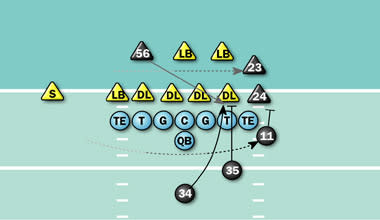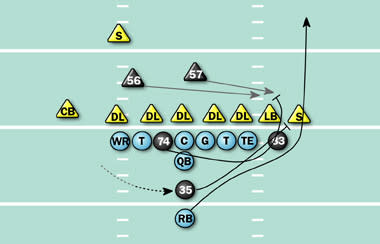Whisenhunt must put RBs in comfort zones
Also in this article:
Next Surveillance:
Niners
More NFL:
Editor's note: Yahoo! Sports will examine the biggest weakness of the 2009 season for every team and explain how the franchise can address the issue. The series continues with the Cardinals, who finished first in the NFC West (10-6).
Biggest problem in 2009: Not enough from the rushing attack

Cards' RB Beanie Wells(notes) is tackled by 'Hawks LB Aaron Curry(notes).
(Otto Greule Jr/Getty Images)
The 2009 Arizona Cardinals, who lost in the divisional round of the playoffs to the Super Bowl-winning Saints, were actually a better team than the 2008 version that came one Santonio Holmes(notes) miracle catch short of winning Super Bowl XLIII. The '09 Cardinals had a better record; they were more efficient on offense, defense and overall than the 2008 team; and nobody questioned their legitimacy in the playoffs. Where the team wasn't vastly improved was on the ground.
After finishing last in rushing yards (73.6 yards per game) in 2008, the Cardinals ranked 28th (93.4) last season. Rookie back Beanie Wells, per Football Outsiders metrics, was the best red zone back in the NFL in 2009, but he got only 33 red zone carries.
The 2010 solution: Whisenhunt needs to go back to the future

Whisenhunt
Although he went with a very high pass/run ratio when former quarterback Kurt Warner(notes) was on the field, coach Ken Whisenhunt is more of an old-school offensive mind. When he took over the Steelers' offense in 2004, he had a rookie quarterback in Ben Roethlisberger(notes) and a rushing attack preset to succeed. In 2004, Whisenhunt called the plays for an offense with the lowest pass ratio (0.64) in the last 25 years – the Steelers ranked first in rushing attempts (618) and last in passing attempts (358). The Steelers went 15-1 and made it to the AFC championship game with Jerome Bettis and Duce Staley leading the way on the ground. In 2005, the Steelers won Super Bowl XL with the lowest pass ratio (0.75) of any NFL champion since the Dolphins of the early 1970s. Then, teams ran far more frequently than they do now.
If Whisenhunt wants to reproduce that rushing attack with current backs Wells and Tim Hightower(notes), he just needs to put each back in his best role. Hightower is more like Willie Parker(notes), who became Pittsburgh's speed back in 2005. Hightower scored eight rushing touchdowns last season, but he's not quite as productive in the red zone as Wells proved to be in his rookie year. Two plays in the Cardinals' Week 10 win over the Seahawks (in which Wells scored two rushing touchdowns) indicated just how Wells became the lead dog as the season progressed. Both plays came on fourth-and-1 situations in the red zone.

Figure 1
The first play (Fig. 1) happened with 2:52 left in the first quarter, with the game scoreless. The Cards had driven down to Seattle's 1-yard line and tried to send Hightower behind fullback Dan Kreider(notes) (35). Hightower (34) was stopped and pushed back for no gain by linebacker Leroy Hill(notes) (56) as receiver Larry Fitzgerald(notes) (11) blocked safety Deon Grant(notes) out from the edge. The Cards had down-blocked end Cory Redding(notes) inside, so the Hightower-Hill matchup was basically mano-y-mano at the goal line, and Hill had more power. Hill came from the other side, jumped the pile, and made the stop. Hightower is good at finding spaces in short areas (one reason he scored seven touchdowns on his 12 goal-line carries in 2009), but some circumstances require pure power.

Figure 2
On the second play (Fig. 2), which happened with 8:18 left in the third quarter from the Seattle 10-yard line, the Cards showed an interesting dual fullback motion pre-snap – tight end Stephen Spach(notes) (83) moved from I-formation to the right side of the offensive line, and Kreider moved into the backfield from a left H-back look. At the snap, it was a pure power sweep all the way. The tight ends pinched inside, and Kreider blocked Grant outside. But the real star was left guard Reggie Wells(notes) (74), who pulled right and blocked Hill and fellow linebacker David Hawthorne(notes) (57) out of the lane so that Beanie Wells could bounce outside. From there, it was an easy run to the end zone. On Wells' second touchdown of the day, early in the fourth quarter, he simply bulled his way up the middle from 13 yards out, slicing through the Seahawks' defense like the proverbial knife through butter.
The Cardinals will greatly miss Warner's scoring potential, but they've been planning for his retirement by building a power run game. Now that those pieces are in place, they should be able to transcend the early foibles of their new starting quarterback … whoever he may be.
